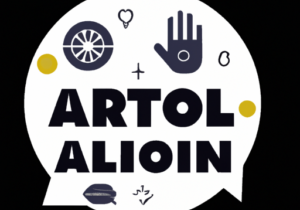In the world of marketing and sales, you need to be thinking about what works best to sell to your ideal customer. It’s all about driving sales.
Nowadays, we can see marketing strategies shift from focusing on quantity to concentrating on quality. Businesses have realized that spamming just isn’t the way to go. No one likes having fifty million spam emails every day. Instead of trying to shove as much advertisement down your customers’ throats as you can, you need to consider tailoring your marketing to fit your target customers.
Billy Bateman, host of the podcast Digital Conversations, discussed best practices of selling smarter with Gabe Larsenof Xant. In this episode, Gabe gives great insight on 4 key strategies for advertising and marketing your business in a tasteful and effective way. When mapping out your marketing and sales strategies, take into account these four things: attempts, media, duration/spacing, and content.
1. Attempts

How many times should you attempt to reach out to a lead? Once? Five times? Fifty?
Really, that number should be under ten. That’s what is optimal. Don’t make the mistake of trying to chase down a lead that won’t convert in the end. You want your prospects to be aware of what you have to offer (even if they claim to currently be uninterested), but you don’t want to annoy them with too many touchpoints.
You need to work efficiently. Take into account the law of diminishing returns. It states that if one factor of production is increased while other factors are held constant, the output will eventually diminish. This basically translates to: if you keep increasing the amount of times you call someone (factor of production), the response rate (output) will decrease. So, there is a cap on efficiency with attempts, which as we mentioned, is around ten. Once you get over ten, it really won’t be more effective or efficient.
2. Media

This is crucial! Media is how you get connected with customers. The buyer needs to be engaged where they want. That means omni-channel marketing is a must! 90% of customers expect consistent interactions across channels. Gabe argues that there are eight communication methods, and the more you use, the better. There’s phone, voicemail, emails, social media, direct mail, text, video, and chat.
But think about what really works best. Are people checking their voicemails? Will reaching out on LinkedIn be most effective? How about good old fashioned mail? You need to use a variety of communication methods to reach out to your customers, not just one digital format. Will it be two emails and three phone calls and maybe even a text? Phone and email are really the big contenders here. Figure out what works for your business and your customers.
At Xant, they have seen that when you use at least three forms of media, your conversation rate increases by four timesthe original amount!
Now let’s really dive into that eighth communication method: chat.
Chatbots
Chat is relatively new and becoming increasingly more popular each year.
Gabe Larsen shares how he feels that chat almost came out of nowhere. He conducted some surveys and was surprised to see how companies were really capitalizing on these chatbots. He couldn’t help but jump on the chatbot bandwagon to see what they were really all about.
This is what he learned:
- Chatbots can’t just be thrown on a website and expected to do their thing. There needs to be thought put into building them. They also need to be worked with, or iterated, after the initial deployment.
- Chatbots take a lot of the burden off of SDRs. Automated conversations can free up SDRs time and allow for customers to get the information they need and then book meetings directly with sales teams. They aren’t going to eliminate SDRs, rather they will work hand in hand to save your company time and money, while still providing an enjoyable experience for your customer.
- A big plus of chatbots is that they make everything more efficient. Naturally, automation drives efficiency. It makes sense to use a bot to engage people and then connect them to your sales team.
3. Duration/Spacing

You’ve got to be asking yourself the real questions: How often should you reach out to customers and how long should you wait before reaching out again?
If you called them yesterday, do you call them today? Should you try emailing them today instead? Do you take a break and try back again in a week?
Duration and spacing are two aspects that may get overlooked, but they are worth thinking about. What you need to consider in regards to duration is how long you should hold onto a lead. Knowing when to give up on a lead may be tricky. And with spacing, you need to be thinking about the amount of time to wait before trying to interact with that lead again.
Let’s talk best practices. Interestingly enough, Gabe and his company went out and asked the market what they thought was best for duration. The results came back with 30 days being the market’s opinion (and they had surveyed about a thousand companies. However, that’s not actually what’s optimal. Data proves that for inbound cadence it should be up to 8 days and for outbound up to 10! Clearly the market is confused or uninformed on really what is the best practice for duration. And then for spacing, data shows that it is best to have 1-2 days between touches.
Now you may be thinking: “Well isn’t that kind of short?” And yes it may seem short, but the data doesn’t lie. Even though in marketing they nurture a lead for months, in sales, it’s best to hit someone hard for a short amount of time, and then pull back for 60-90 days. And then you can recycle them and try again in the future.
4. Content
What are you actually going to say in that email you send out to a prospect? Or in that text message, or voicemail, or chat? Content is the cherry on top. This can make a big difference because even if you follow all the other best practices to a tee, you need to have interesting and useful content.
Let’s just discuss content for emails and chatbots:
- The 5 essential elements of good content for sales emails are the subject line, opening, body, closing call-to-action, and signature. You don’t want it to sound too “sales pitchy.” But you want to make it clear as to why you’re reaching out.
- Good aspects of content when working with chat include a short copy for your chatbot. It also needs to be conversational. You need to make sure your customers feel like the chatbot is actually helping them with what they need.
Track your own stats to see what type of content appeals to your customers.
Conclusion
Remember, marketing and sales is all about engaging with your customers where they are. And you have to be strategic about it. There isn’t one magical formula everyone can follow to have success, but focusing on these four strategies- attempts, media, duration/spacing, and content- is a great place to start!
READ MORE
Start seeing your Buyers' signals
Signals is helping companies automate, grow, and close sales pipeline with industry-leading predictive intent scoring, lead generation, and real-time engagement.



















